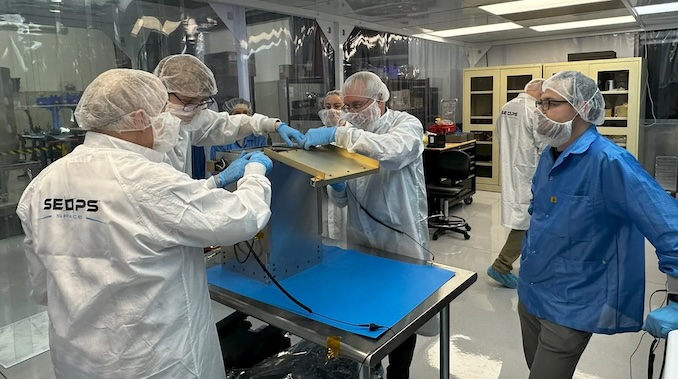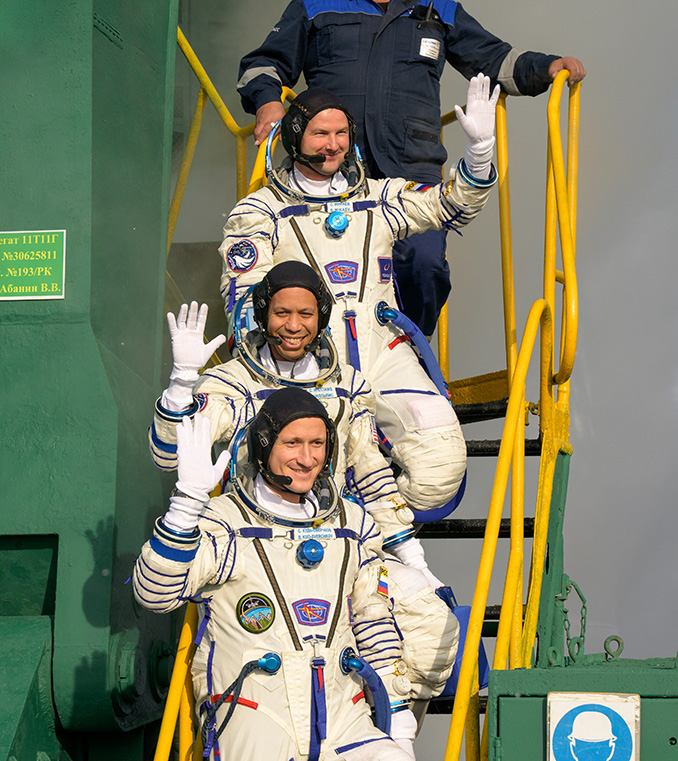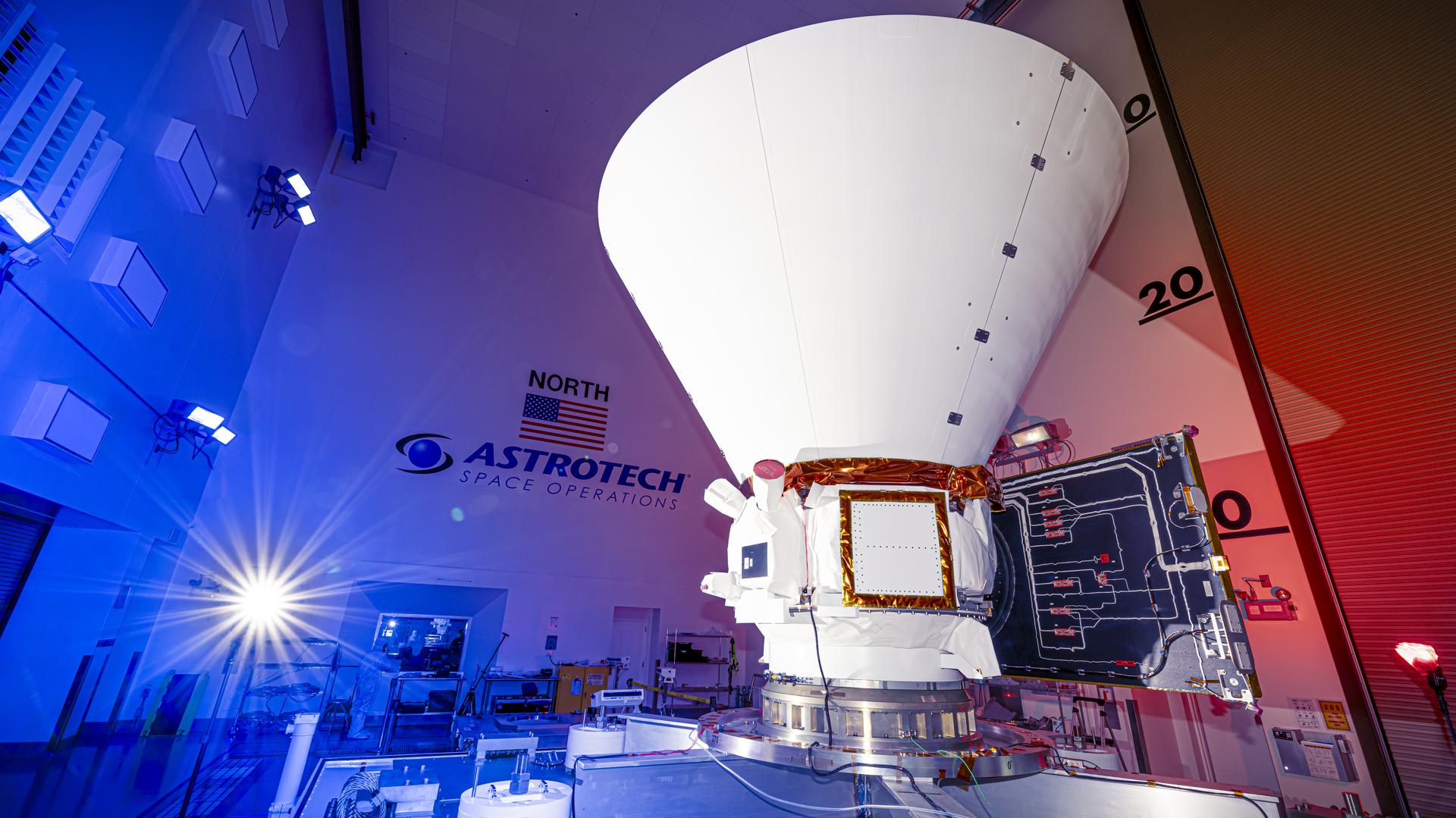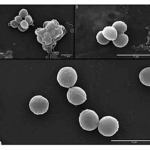Now Reading: Live coverage: SpaceX to launch Bandwagon-3 rideshare mission on Falcon 9 rocket from Cape Canaveral
-
01
Live coverage: SpaceX to launch Bandwagon-3 rideshare mission on Falcon 9 rocket from Cape Canaveral
Live coverage: SpaceX to launch Bandwagon-3 rideshare mission on Falcon 9 rocket from Cape Canaveral

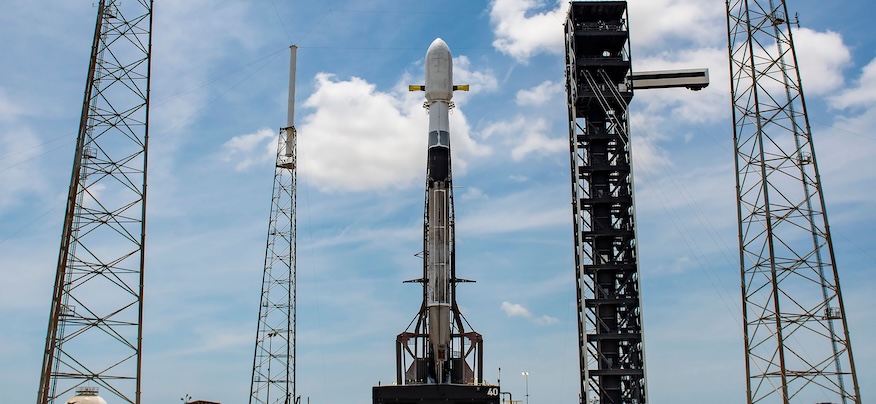
SpaceX is preparing for its third Falcon 9 rocket launch in less than 48 hours with a rideshare mission carrying payloads to a mid-inclination orbit.
Liftoff of the Bandwagon-3 mission is set for 8:48 p.m. EDT (0048 UTC) from Space Launch Complex 40 at Cape Canaveral Space Force Station. It will be the 245th orbital launch for SpaceX from SLC-40 and the 300th total orbital flight from this pad.
This flight is the third launch in SpaceX’s rideshare program to mid-inclination orbits. It follows Bandwagon-1 from Kennedy Space Center and Bandwagon-2 from Vandenberg Space Force Base and 13 Transporter ride-share missions to polar orbit.
Spaceflight Now will have live coverage of the launch beginning about an hour prior to liftoff.
Heading into the launch opportunity Monday night, the 45th Weather Squadron forecast a 95 percent chance of favorable weather, continuing the pattern seen during the early morning launch of the CRS-32 mission from pad 39A.
SpaceX will use the Falcon 9 first stage booster, tail number 1090, to launch the rideshare flight. This will be its third trip to space and back following the launches of the O3b mPOWER-E mission and Crew-10.
About eight minutes after liftoff, B1090 will target a touchdown at Landing Zone 2. This will be just the 12th landing at LZ-2 as compared to the 51 landings at LZ-1.
Among the payloads onboard the Falcon 9 rocket is the fourth synthetic aperture radar (SAR) satellite for the Korea 425 Project constellation for the South Korean military. The first three satellites launched on a series of rideshare flights beginning back in December 2023:
- Korea 425 – Dec. 1, 2023
- Bandwagon-1 – Apr. 7, 2024
- Bandwagon-2 – Dec. 21, 2024
According to a 2018 story in the SAR Journal, the South Korean Agency for Defense Development (ADD) awarded a KRW588 billion ($530 million) contract to Korea Aerospace Industries (KAI) to oversee the development and construction of a series of five surveillance satellites.
The contract requires the satellites to be sent into orbit by 2025, which leaves just one more launch following the planned liftoff on Monday night. The satellites are produced through a partnership between Korean firm Hanwha Systems Corporation (HSC) and Thales Alenia Space, the latter of which is the prime developer.
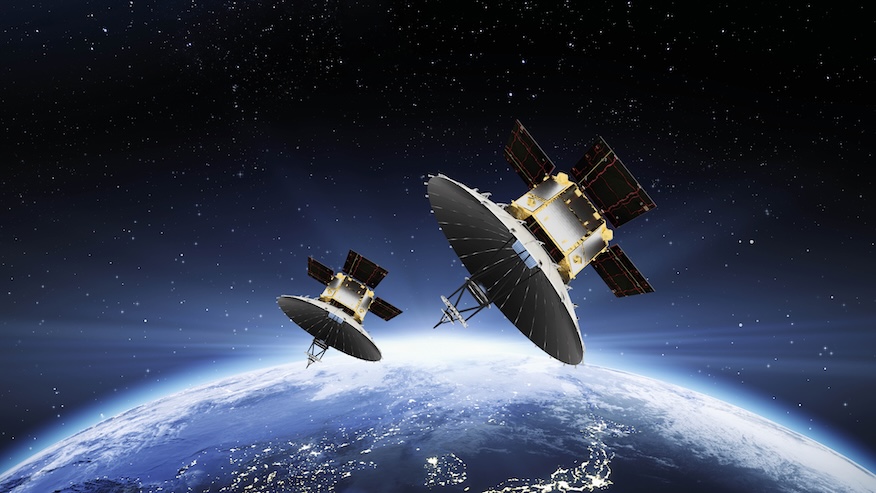
“Our contribution extends to the supply of our high-performance Synthetic Aperture RADAR (SAR) that utilizes an innovative antenna consisting of a large deployable reflector with 24 deployable petals and an active phased array feed array in dual polarization,” Thales Alenia Space wrote following the December 2023 launch of the first Korea 425 Project satellite. “Another significant part of our contribution is the acquisition, storage, and data retransmission system on the ground.
“The high agility of the ‘dancing satellite’ is guaranteed by the innovative avionics and Control Momentum Gyroscope, also provided by Thales Alenia Space. These advanced technologies enable high-performance observation and surveillance capabilities, critical to the success of the program.”
The fifth and final SAR satellite may launch onboard the Bandwagon-4 mission, though that has not been formally announced.
Sharing the Falcon 9 with the 425 Project satellite are the Tomorrow Company Inc.’s (Tomorrow.io) Tomorrow-S7 satellite and Atmos Space Cargo’s Phoenix re-entry capsule.
According to the Observing Systems Capability Analysis and Review Tool (OSCAR), part of the World Meteorological Organization, the Tomorrow-S7 satellite is the ninth spacecraft in the Tomorrow.io constellation and the seventh in the Tomorrow Microwave Sounder series.
The 6U CubeSat (roughly 30 cm x 20 cm x 10 cm) reportedly has a dry mass of 12 kg (26.5 lbs) and will operate in low Earth orbit at 515 km (320 mi) in altitude at a 45-degree inclination.
It’s designed to have a three-year operating life with a mission to observe “all-weather temperature and humidity profiles.” The OSCAR tool suggests that there may be a second sounder satellite from Tomorrow.io onboard the Bandwagon-3 mission. Spaceflight Now reached out to the company to confirm if that’s accurate and is waiting to hear back.

The final passenger onboard Bandwagon-3 is Atmos Space Cargo’s Phoenix capsule. The German company received permission for the re-entry mission from the Federal Aviation Administration (FAA) in January, which will makes it “first private company in Europe to receive such authorization and the first non-governmental entity in European history to attempt space re-entry.”
The mission, dubbed Phoenix 1, is designed to complete two orbits around Earth before making its atmospheric re-entry. It’s designed to gather data about the capsule’s inflatable heat shield and has three core objectives:
- Collecting in-flight data from the capsule and sub-components in orbit
- Gathering scientific data from customer payloads carrying technology demonstrators and biological experiments
- Successfully deploying and stabilizing the Inflatable Heat Shield during atmospheric re-entry
According to a February 2025 press release from the company, Atmos said the mission “is expected to conclude with the prototype’s demise during re-entry, providing valuable flight data for the next iteration of this platform – the Phoenix 2 capsule.”
“Driving advancements for reusable, affordable and reliable downmass is critical to the success of orbital space development,” said Lori Garver, the former NASA Deputy Administrator and member of the Atmos advisory board. “Having the ability to return life sciences and other types of microgravity research, rocket upper stages, military spacecraft and manufactured resources could be the next breakthrough in space transportation.”
Onboard the spacecraft are four payloads from three customers: DLR from Germany with its M-42 radiation detector, IDDK from Japan with its Micro Imaging Device and Frontier Space from the United Kingdom with its ‘lab-in-a-box’ SpaceLab and a bioreactor.
The Phoenix 1 spacecraft arrived in Florida in late March and integration, in partnership with Exolaunch, was completed earlier this month.
In an update to the mission published on April 18, Atmos said they had to change their mission’s trajectory, which called for a change in the ground stations being used in the operation. The landing site shifted away from a re-entry over Africa and a splashdown in the Indian Ocean.
The new trajectory has the re-entry beginning over Los Angeles, California, extending across South America, resulting in a splashdown about 2,000 km off the coast of Brazil in the Atlantic Ocean. Atmos didn’t go into detail as to why the mission profile needed to change.
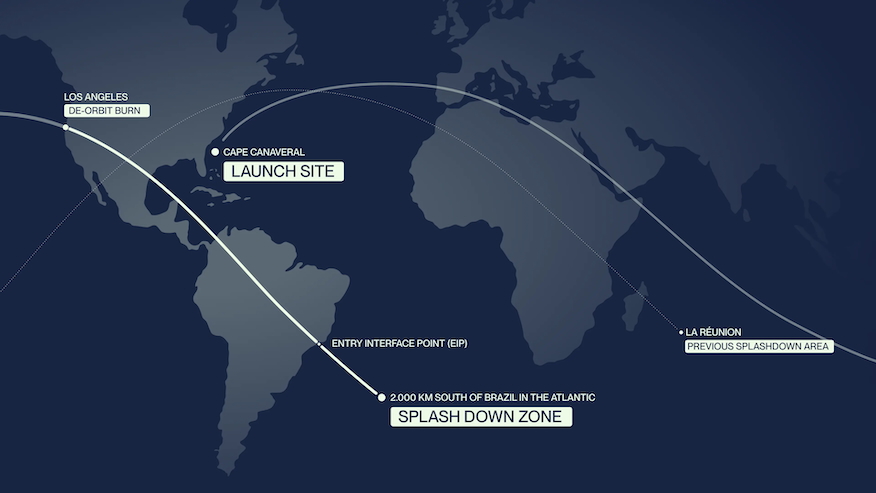
The team will also attempt to compensate for the loss of traditional communication during the re-entry phase by conducting an air-to-air reconnaissance mission. It will do so by chasing the Phoenix 1 spacecraft with a “chartered aircraft equipped with a mobile satellite terminal from its EIP (at roughly 120 km altitude) through the plasma blackout phase.”
“Once deployment of Phoenix is confirmed, the Atmos Mission Control team will receive and pass on current trajectory data to our GNC (guidance, navigation control) team, who will quickly calculate an exact flight path to share with our airborne recon team in the chase plane, who will be on their way to meet and follow Phoenix just as it enters Earth’s atmosphere and continues its descent,” Atmos wrote.
“We added this experimental new chapter to our mission plan with the aim to visually monitor and confirm the status of our capsule while attempting to re-establish a data link after plasma blackout to recover the most valuable flight data for further heat shield analysis and the subsequent vehicle development of Phoenix 2 – expected to launch in 2026. Phoenix 2 will carry its own propulsion system on board, allowing us to independently determine the moment of re-entry as well as our return trajectory and angle.”
Atmos said it also anticipates a “steeper flight path angle, resulting in a higher vertical re-entry velocity, which introduces higher thermal and aerodynamic loads to our capsule’s re-entry scenario.”
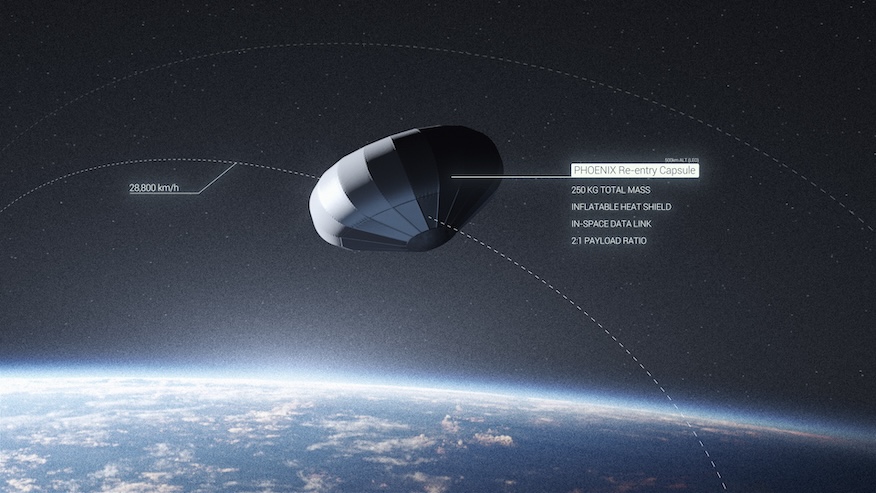
“Under these conditions, there is a high probability that the increased thermal stress and aerodynamic forces may affect the capsule structure and heat shield, but all flight data we will receive during this inaugural flight will inform our system analysis and optimization for Phoenix 2.
Back in February, the company received €13.1 million in funding from the European Innovation Council, part of the European Union’s Horizon Europe framework, to help support the development of the Phoenix 2 spacecraft.
Stay Informed With the Latest & Most Important News
Previous Post
Next Post
-
 012024 in Review: Highlights from NASA in Silicon Valley
012024 in Review: Highlights from NASA in Silicon Valley -
 02Panasonic Leica Summilux DG 15mm f/1.7 ASPH review
02Panasonic Leica Summilux DG 15mm f/1.7 ASPH review -
 03How New NASA, India Earth Satellite NISAR Will See Earth
03How New NASA, India Earth Satellite NISAR Will See Earth -
 04And Thus Begins A New Year For Life On Earth
04And Thus Begins A New Year For Life On Earth -
 05Astronomy Activation Ambassadors: A New Era
05Astronomy Activation Ambassadors: A New Era -
06SpaceX launch surge helps set new global launch record in 2024
-
 07Space Force plans new ‘Futures Command’ amid pressure to speed up modernization
07Space Force plans new ‘Futures Command’ amid pressure to speed up modernization












